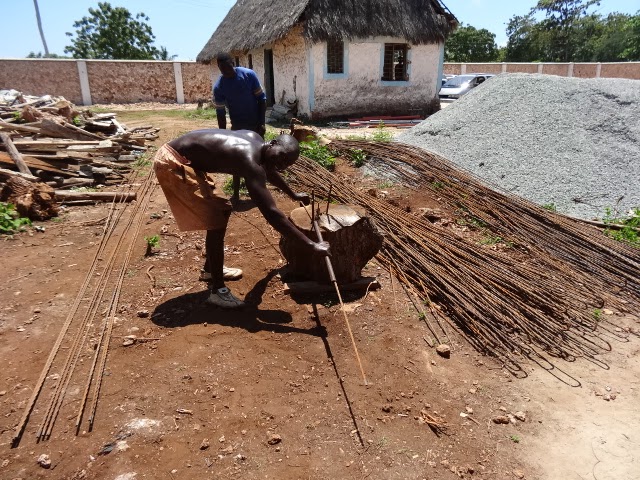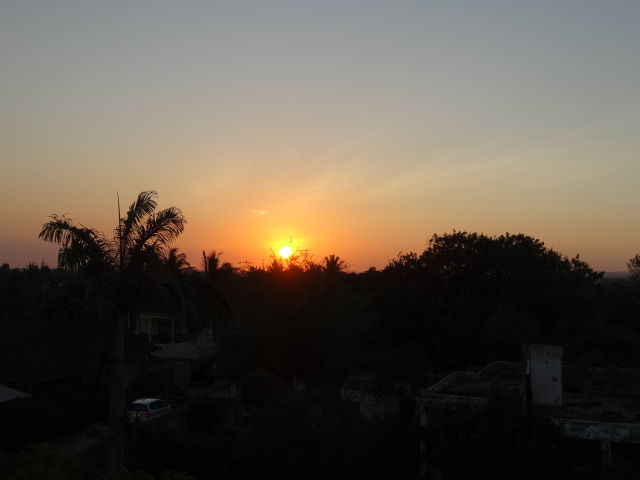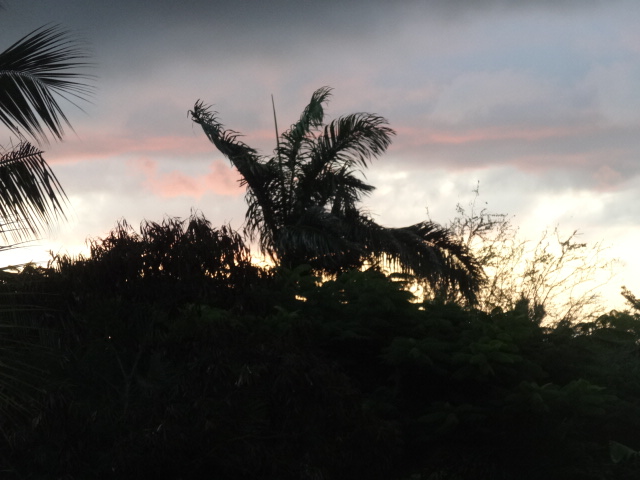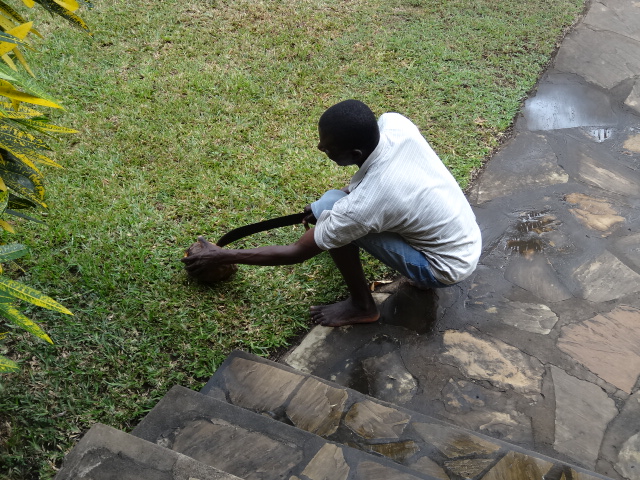 |
| Moonbeams over the Indian Ocean last night at the Blue Marlin Restaurant, reflecting off the ocean and lighting the sand. Tiny sand crabs were scurrying about at our feet on we stood in the sand. |
 |
| The moon as it made it’s way from the fast moving clouds. |
 |
| Ah, moonlight! |
 |
| This spot was ideal for relaxing after one drank too many Margarita’s! |
With a 7:30 pm reservation at the acclaimed seaside restaurant, the Blue Marlin, we were shocked when by 9:30 pm not another guest had arrived to dine. We had the entire restaurant and staff to ourselves, receiving impeccable service and thoughtful attention on a perfect moonlit night.
 |
| The chalk board at the Blue Marlin listed the daily specials. |
 |
| The Blue Marlin offered a relaxed comfortable environment for diners. Notice an actual blue marlin on the wall. |
 |
| Tom drank two bottles of this local Tusker beer. You’d have to carry me out if I drank two of these. I’m often tempted to have a drink but having anything with alcohol, as seldom as I do, results in outrageous hangovers from two of anything. Plus, one is no fun! |
The strong breeze from the sea was refreshing, the food divine, the ambiance inviting, leaving us feeling relaxed and at ease. The short 5 minute cab ride confirmed yet again, that within our reach are all the restaurants we could possibly want for our weekly dining our experiences.
 |
| Yes, I know. Photos of us often shows us wearing the same clothes over and over. After ditching most of our clothing to lighten our load, we have no choice but to do so. We try to wear the same items frequently in order to wear them out for disposal, saving the newer items for the future. So far, nothing has worn out. With no clothes dryers available, the thinnest tee shirts “live” forever. |
As we work our way through Trip Advisor’s list of the top 18 restaurants in Diani Beach, thus far we’ve tried 3 of the top 4 and will continue to work our way down.
 |
| What a smiley guy! I’m lucky! |
With our remaining time in Kenya, we’ll fall short of trying out the entire list, plus with our upcoming safari over a weekend, we’ll only be able to have tried the top 11.
 |
| The chef insisted we take a photo together! |
The Blue Marlin’s fish and shellfish are caught each day in the Indian Ocean, a few short steps from their door, to be served that evening for some of the finest tasting seafood we’ve had in our travels.
 |
| The waiters were anxiously waiting for more diners to arrive. Why, they didn’t baffled us. |
The aroma of garlic, butter and rich fish sauces permeated the air as we pulled into the guarded gate sending our appetites to “full on” mode. With Tom’s finicky palate, I wondered if there would be alternate selections for him.
 |
| The cooks at work in the outdoor kitchen preparing our appetizers and main courses. |
For appetizers, I ordered a gluten free crab salad prepared in a creamy seasoned mayonnaise sauce while Tom ordered bacon wrapped jumbo prawns. Both were epicurean delights, pleasing to the palate.
 |
| Tom’s appetizer of bacon wrapped jumbo prawns. I pointed out the bulging eyes. He asked, “Why’d you tell me that?” |
 |
| My appetizer was a delicious creamy crab salad. |
Once again, my guy surprised me ordering a local fish dish referred to as Swahili Fish, most likely a type of snapper with special sauces and spices, served with coconut flavored white rice and vegetables. He ate every morsel on his plate.
 |
| Tom’s dinner consisted of a sizable portion of Swahili Fish, most likely a type of snapper. Bone free and lightly season with a rich buttery coconut sauce, he had no trouble devouring every morsel. |
My dinner was grilled calamari rings from what must have been one giant squid. I could have worn them as bracelets as opposed to the usual small rings typical in fried and battered calamari.
 |
| Look at the size of these calamari rings! I, too, savored every morsel on my plate. |
Usually chewy, (one of the reasons I like squid), they were prepared to perfection leaving the chewiness factor in tact. The remainder of my plate was filled with slightly crunchy grilled vegetables, seasoned in local spices.
 |
| Tom took this photo from the beach on the Indian Ocean as tiny sand crabs scurried around his feet. While we dined, the crabs were everywhere. Our dog friend, Zaa Zaa couldn’t resist chasing the larger crabs that she found on the beach. |
With the full moon rising in a spectacular display throughout the evening, on several occasions we walked the short distance to the sand to take photos. It couldn’t have been a more perfect evening.
Two dogs lived outdoors at the restaurant, one a malamute and the other, a Jack Russell mix. The JR, Zaa Zaa, never left our side, graciously soliciting a tidbit. Tom fed her the bulgy eyed head of one of his giant prawns which she enthusiastically devoured.
I chuckled to myself a few times thinking, “Gee, we have a moonlit night, extraordinary food, ideal weather conditions, quiet surroundings, an attentive adorable dog at our side, all the while engaged in lively and animated conversation with each other.
The total cost for the evening was US $75.53 which includes meal, cab fare, tax and tips.
 |
| Zaa Zaa, our friendly companion for the evening, lying at our feet as we dined. |
Tonight, we’ll be dining with Jeri and Hans at their home. Happy hour will be on their third floor veranda. I wonder if we’ll dine at their cozy indoor dining table or outside on the veranda. We haven’t had an indoor meal in almost three weeks.
How weird is that!































































































































